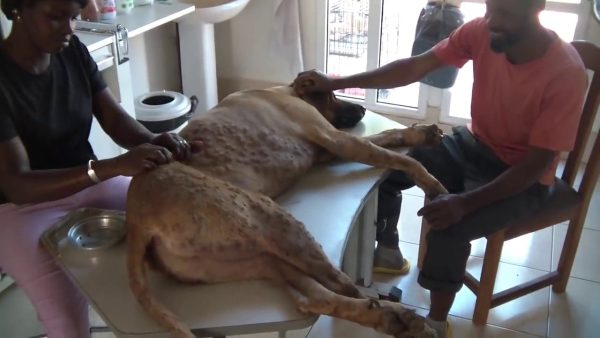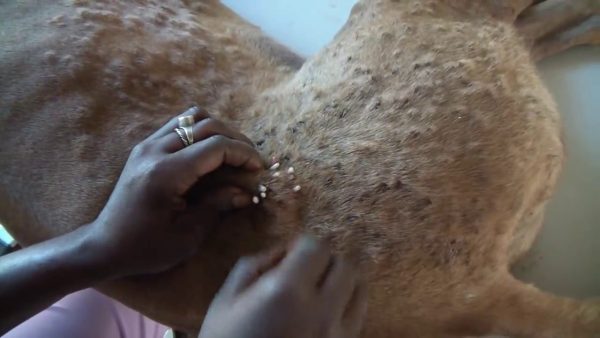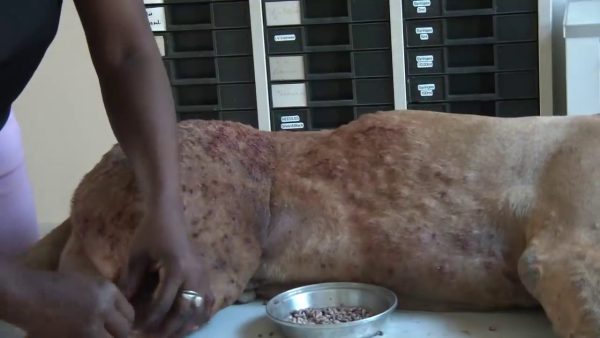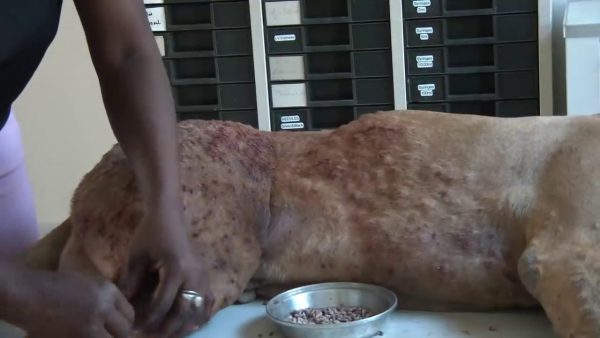In the somber corners of a city’s streets, where hardship and resilience intersect, a heartbreaking revelation unfolded as the mysterious skin lesions on a homeless dog were exposed to be the result of a maggot infestation. The poignant tale of the canine, previously shrouded in uncertainty, now revealed a painful struggle against a hidden adversary.

The streets, often harsh and unforgiving, bear witness to the silent battles fought by the most vulnerable among us, including the countless stray animals seeking solace in the shadows. Among them, a homeless dog, with its coat hiding the secrets of its suffering, carried the weight of a painful truth—its skin lesions were not merely scars of the streets but signs of a hidden and tormenting infestation.

The revelation began when compassionate souls, moved by empathy, noticed the dog’s unusual behavior and apparent discomfort. Upon closer inspection, the extent of the suffering became apparent—a tapestry of mysterious skin lesions adorned the dog’s body, each one concealing a disturbing secret. The initial shock transformed into a collective determination to uncover the cause and alleviate the creature’s anguish.

As the rescue efforts intensified, veterinarians and animal welfare volunteers delicately examined the dog’s wounds, peeling back layers of uncertainty to expose the heart-wrenching truth. The seemingly innocuous lesions, initially dismissed as battle scars of street life, were identified as the insidious result of a maggot infestation—an affliction that had silently preyed upon the defenseless creature.

Maggots, often associated with decay and neglect, had taken residence within the dog’s flesh, causing not only physical pain but also a profound sense of vulnerability. The revelation prompted a surge of compassion from those who had witnessed the plight of the homeless dog, galvanizing efforts to provide immediate medical intervention and relief.

The rescue mission became a poignant collaboration between animal welfare organizations, veterinarians, and compassionate individuals. Each delicate removal of a maggot, accompanied by soothing words and gentle touches, sought to restore not only the dog’s physical well-being but also its trust in the kindness of humanity.

The revelation of the maggot infestation transcended the narrative of a single dog’s suffering; it became a stark reminder of the challenges faced by homeless animals struggling to survive on the unforgiving streets. The heartbreaking images of the dog’s wounds served as a rallying cry, inspiring communities to advocate for change, raise awareness about animal welfare, and address the root causes of homelessness among our four-legged companions.
The story of the homeless dog, once marred by the shadows of neglect, now stood as a testament to the transformative power of compassion and collective action. The revelation, though painful, sparked a wave of empathy that echoed beyond the individual canine’s plight, igniting a commitment to create a world where no creature, homeless or otherwise, would suffer in silence.
As the dog began its journey of recovery, supported by newfound allies and the resilience of its own spirit, the revelation of the maggot infestation became a pivotal chapter in its tale—a chapter that spoke not only of pain but also of the remarkable capacity for healing, compassion, and the unwavering hope that a brighter future awaited, free from the shadows of suffering.



